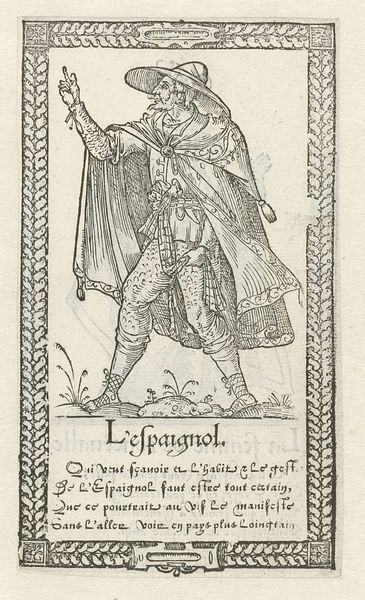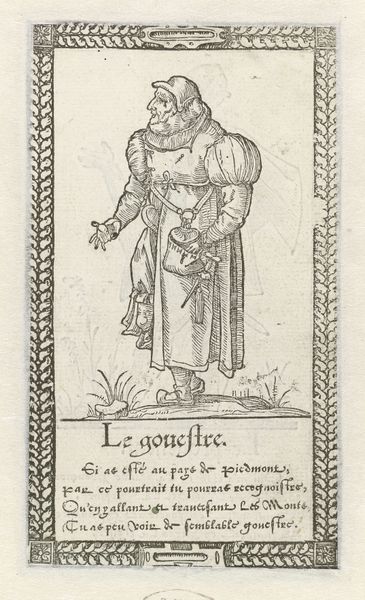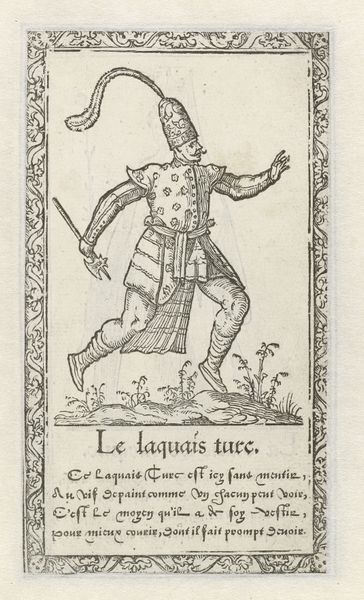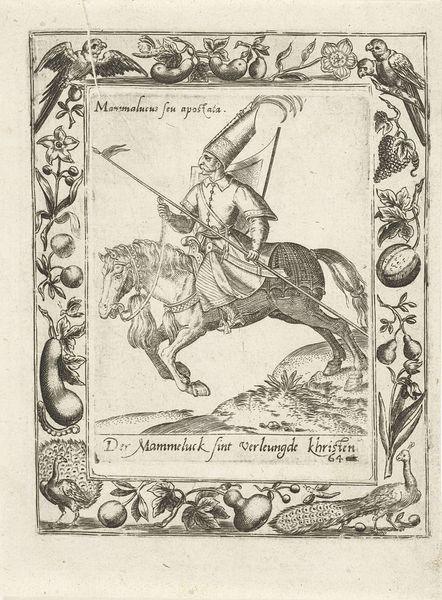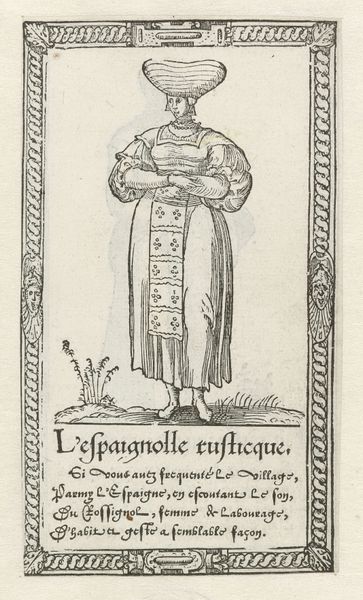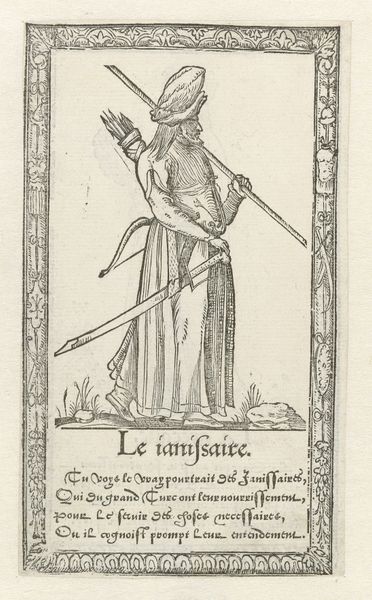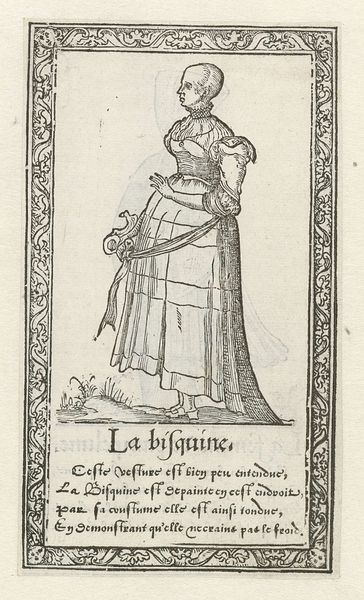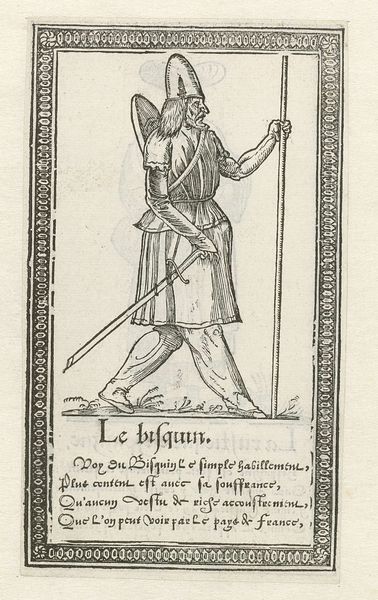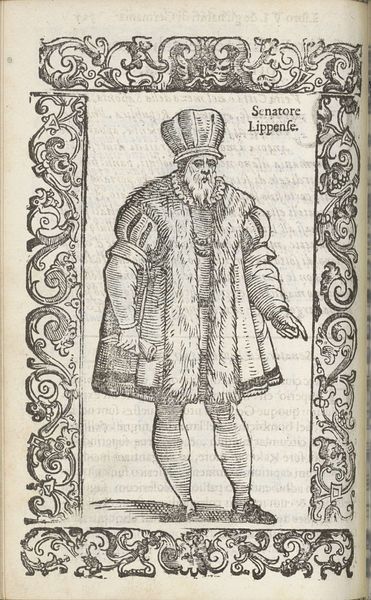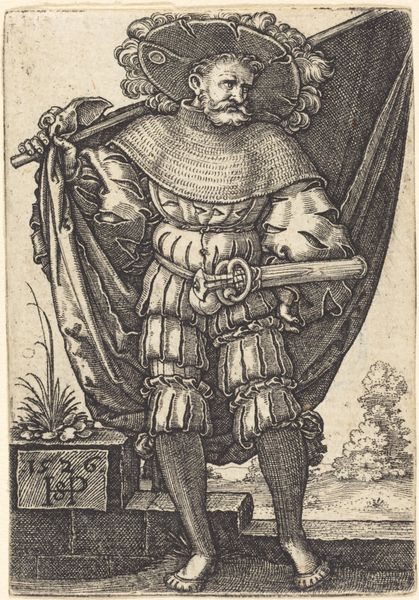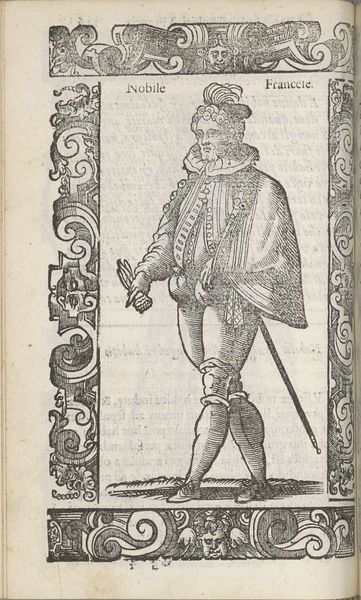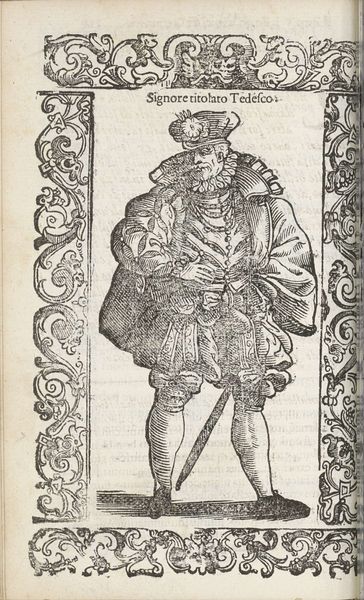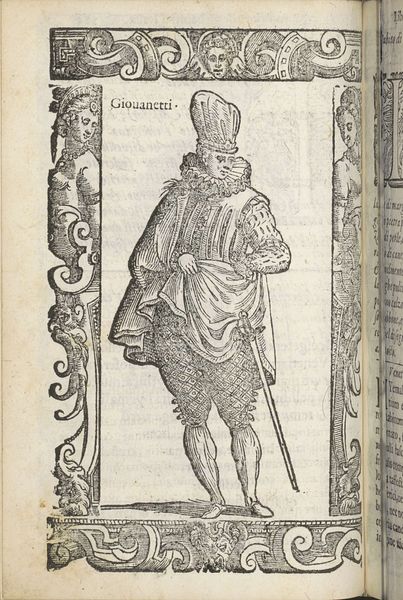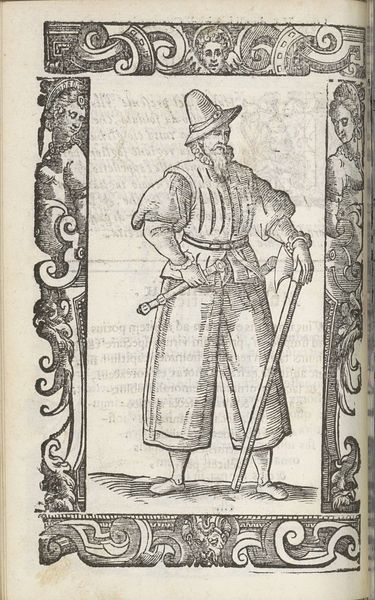
print, engraving
# print
#
pen sketch
#
old engraving style
#
figuration
#
11_renaissance
#
line
#
history-painting
#
northern-renaissance
#
engraving
Dimensions: height 146 mm, width 85 mm
Copyright: Rijks Museum: Open Domain
Curator: This engraving, entitled "Landsknecht," was created by François Desprez in 1562. What strikes you initially? Editor: There's an almost satirical quality to the rendering. The figure seems weighed down by his flamboyant garb, the lines are precise, yet there’s an exaggerated heaviness. Curator: The northern Renaissance style is unmistakable in its linear detail. Look at the intricate hatching used to define the musculature and armor. There's a commitment to realistic representation, almost to a fault. Editor: I see something else as well. Landsknechts were mercenaries, often associated with violence and social disruption. Doesn’t this print subtly critique their performative masculinity and role in 16th-century conflicts? Curator: It is not easy to define if it´s criticism or portrait. One can focus on the balance achieved despite the intricate lines and patterns in the decorative border, or even how the artist uses line to create a sense of depth, particularly in the folds of the clothing and the plume of the helmet. The work invites to a careful consideration on Renaissance aesthetics. Editor: That aesthetic is always intertwined with power. Consider the perspective of peasants or city-dwellers who suffered due to these soldiers. The elegance might conceal a darker reality. It opens some difficult questions regarding class and social inequalities. Curator: Yes, and it allows one to study the evolution of conflict, in terms of costuming, weaponry, and symbolic performance. Editor: Precisely. A seemingly simple engraving offers so much complexity once we consider the wider context.
Comments
No comments
Be the first to comment and join the conversation on the ultimate creative platform.
